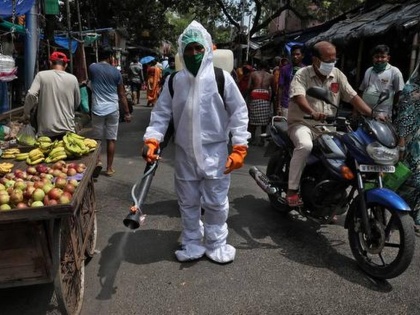Amid rises cases in India, new COVID-19 lineage found in West Bengal
By Lokmat English Desk | Published: April 21, 2021 06:15 PM2021-04-21T18:15:51+5:302021-04-21T18:16:23+5:30
A new lineage of the SARS-CoV-2 virus, called B.1.618, has been identified in India, which is predominantly circulating in ...

Amid rises cases in India, new COVID-19 lineage found in West Bengal
A new lineage of the SARS-CoV-2 virus, called B.1.618, has been identified in India, which is predominantly circulating in West Bengal.This is the second lineage to be identified from India, the first being B.1.617, also known as the ‘double mutant’ virus, according to a Twitter thread by Vinod Scaria, a researcher at the Council of Scientific and Industrial Research’s Institute of Genomic and Integrative Biology (CSIR-IGIB) in New Delhi. According to a Twitter thread by Vinod Scaria, a researcher at the Council of Scientific and Industrial Research's Institute of Genomic and Integrative Biology (CSIR-IGIB) in New Delhi, "E484K is a major immune escape variant -- also found in a number of emerging lineages across the world. E484K can escape multiple mAbs as well as panels of convalescent plasma, meaning the infection through this variant makes plasma therapy, or plasma taken from recovered Covid-19 patients and given to those who are infected with Covid-19, as redundant as an investigational treatment.
"While E484K is in the Receptor Binding Domain, Y145 and H146 are not part of the residues interacting with the Human ACE2 receptor. The structural impact of the 2AA deletion causes to spike protein is yet to be understood completely," said Dr Scaria."There are many unknowns about this lineage at this moment, including its capability to cause reinfections as well as vaccine breakthrough infections. Additional experimental data is also required to assess the efficacy of vaccines against this variant," said Dr Scaria. "At this moment, there is no conclusive evidence that the lineage drives the epidemic in West Bengal, apart from the fact that the numbers and proportions have been significantly increasing in recent months. More focused epidemiological investigations would address these questions," he said. Data submitted from India to the global repository GISAID shows B.1.618, at 12 per cent, is the third most common variant sequenced in the last 60 days. The B.1.617, at 28 per cent, is the most common among sequences, followed by B.1.1.7 (the UK variant), the India Mutation Report by Scripps Research showed, citing the GISAID data.Live TV
Open in app